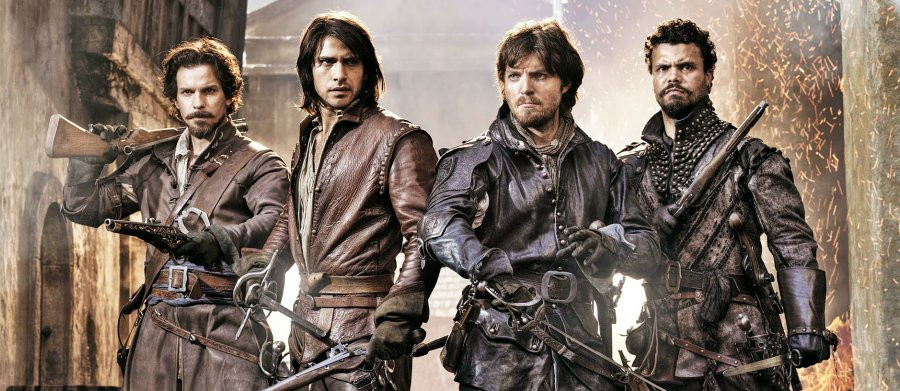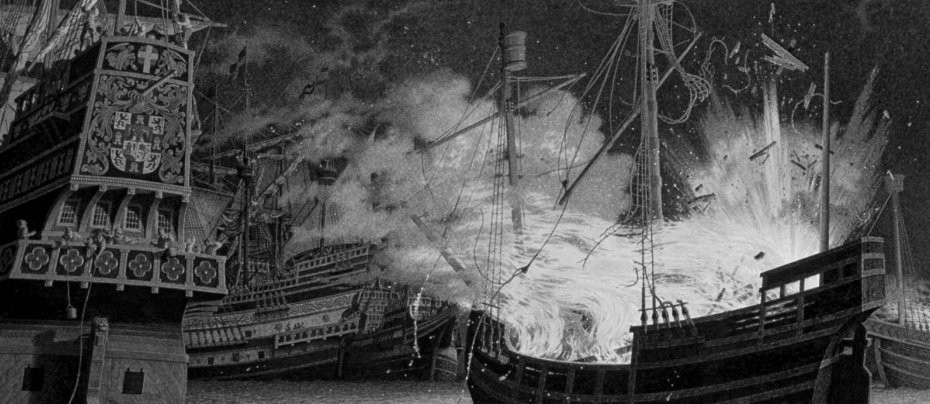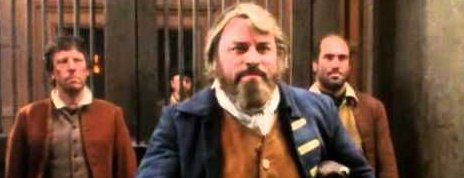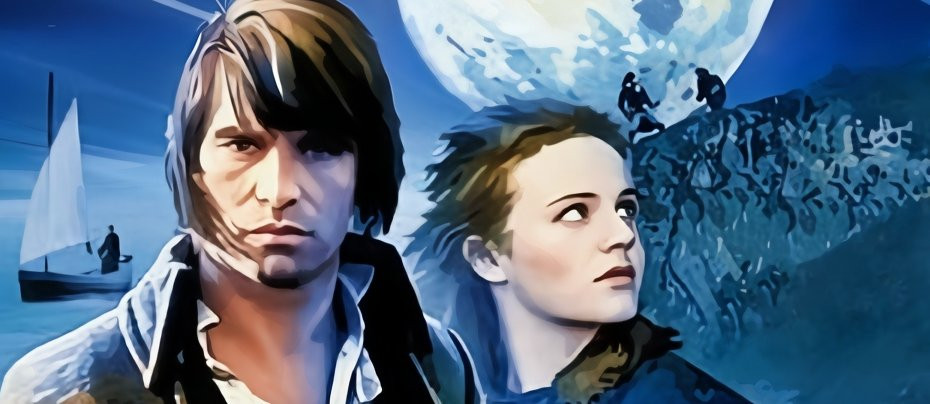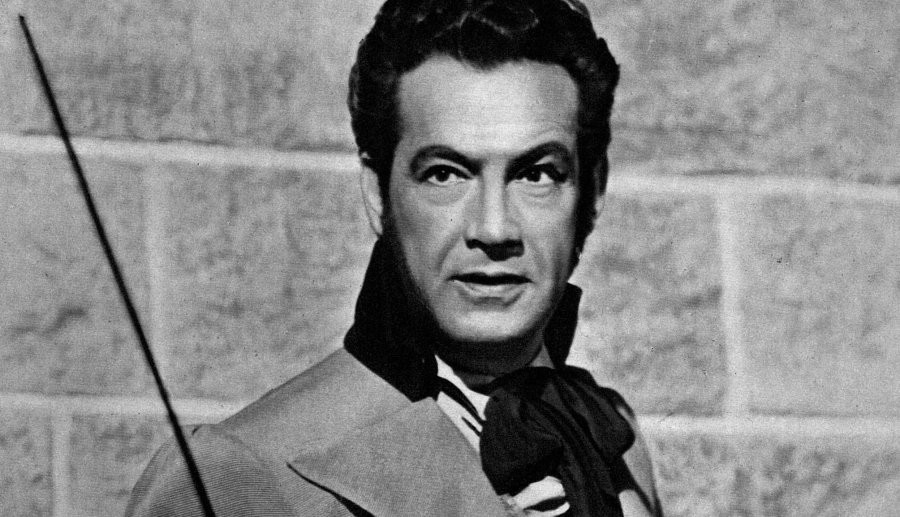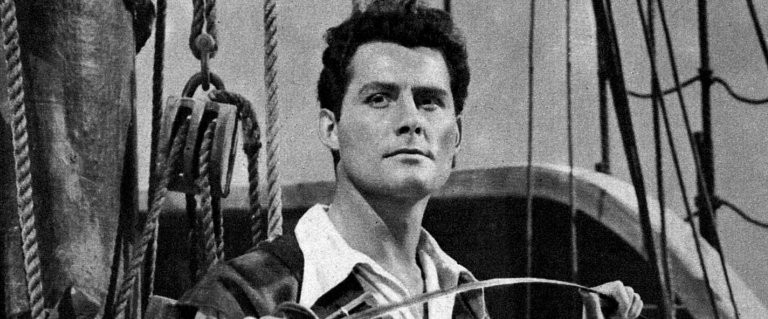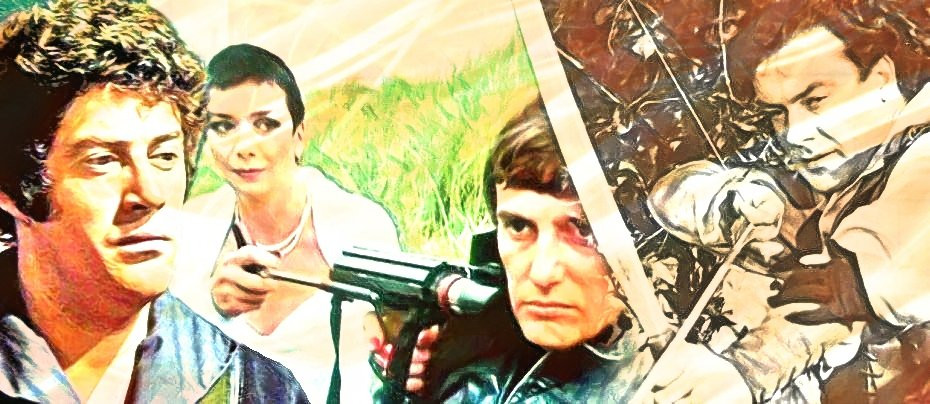
Robin Hood in Space
Robin Hood in Space: Blake’s 7 Series 1 and the Robin Hood narrative
There are a number of influences on the format of the first Blake’s 7 series (1978). Creator and writer Terry Nation referred to the series as ‘The Dirty Dozen in space’ where the notion of a disparate group of convicts embarking on a dangerous mission may have been suggested by this 1967 film. Alan Stevens and Fiona Moore have also noted the possible link between the Scarlet Pimpernel’s nemesis Chauvelin and Blake’s 7’s Supreme Commander Servalan (2003: 38). This article, however, will explore in more detail than has been done before the connections between the Robin Hood narrative and Blake’s 7 Series 1 whether consciously intended or not by Terry Nation, or by script-editor Chris Boucher.
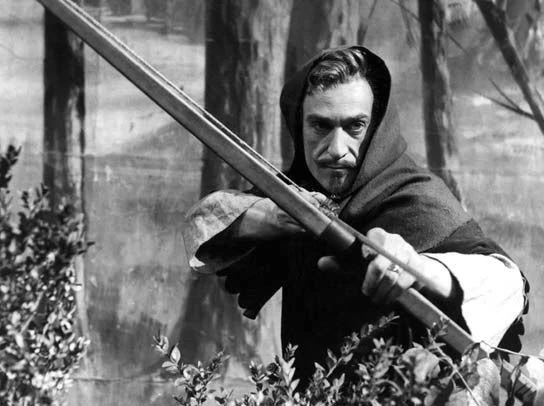
In preparation for this article, Robin Hood ballads and plays were read and all existing films were watched from the silents beginning in 1908 to the films of the late 1970s, including the Walt Disney 1973 feature length animation and the cartoon shorts. The first serialised Robin Hood, starring Patrick Troughton (1953), is currently missing from the BBC Archives, save for a portion of the second episode which can be viewed on YouTube. The ITV series The Adventures of Robin Hood (1955-60) does, however, exist in its entirety and yielded interesting findings as did The Adventures of William Tell (1958-59) which is included in this article as it is a Swiss retelling of Robin Hood. There was also a 1975 serial The Legend of Robin Hood where Paul Darrow’s performance as the Sheriff of Nottingham led to his being cast as Avon in Blake’s 7 (Stevens and Moore 2003: 66). The figure of Robin Hood furthermore appears in Ivanhoe, starring Roger Moore, such as in the episode ‘Arms and the Women’ (5/10/58), and in the ten-part 1970s BBC serial, directed by David Maloney.
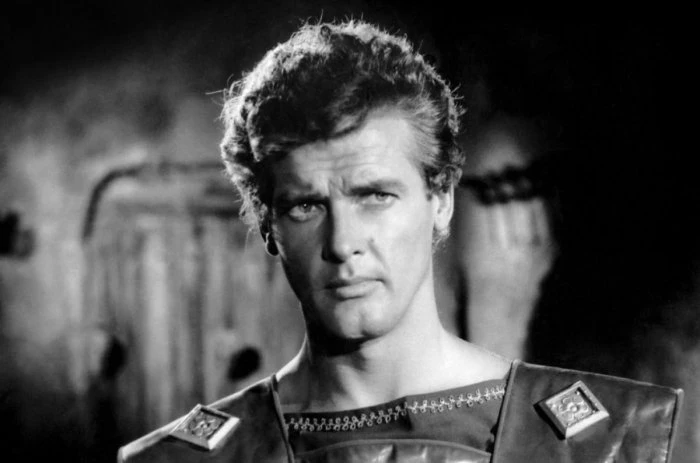
Connections between Blake’s 7 and Robin Hood have been made previously adding to the fact that Blake’s 7 was initially pitched as ‘A modern swashbuckler’ (Stevens and Moore 2003: 18). Alwyn W. Turner, for example, writes that Robin Hood ‘the greatest of all English myths’ is a reference point, with ‘the noble-born hero who makes himself an outlaw in order to fight a guerrilla war in the name of justice’ for ‘the rights of the oppressed and the restoration of justice’ (2011: 240). Turner notes that there are some echoes of Robin Hood in terms of character (Blake’s crew being like the Merry Men and specifically Olag Gan derived in part from the giant Little John with the characters incidentally coming together as a group over time) (2011: 240). Turner also argues that there are echoes of Robin Hood in terms of costume (2011: 240) (Stevens and Moore similarly note that in the episode ‘Seek-Locate-Destroy’ two of the rebels are dressed in green, one in scarlet and a large man in brown suggesting Robin, the Merry Men, Will Scarlet and Friar Tuck (2003: 66)). However, as Turner also observes whereas ‘Robin was sustained by the knowledge that one day King Richard would return to reclaim his land from the evil Prince John and his henchmen, represented by the Sheriff of Nottingham…for Blake and his companions…there is no…real hope of ultimate victory, only the fact of resistance against overwhelming odds’ (2011: 240). Stevens and Moore, moreover, note that Travis’ plan to use Cally as bait to lure Blake into a trap in ‘Seek-Locate-Destroy’ is vaguely reminiscent of the Sheriff of Nottingham’s scheme to entrap Robin (an archery contest and the hand of Maid Marian) (2003: 66). Yet, there are many stronger specific allusions which this article will explore.
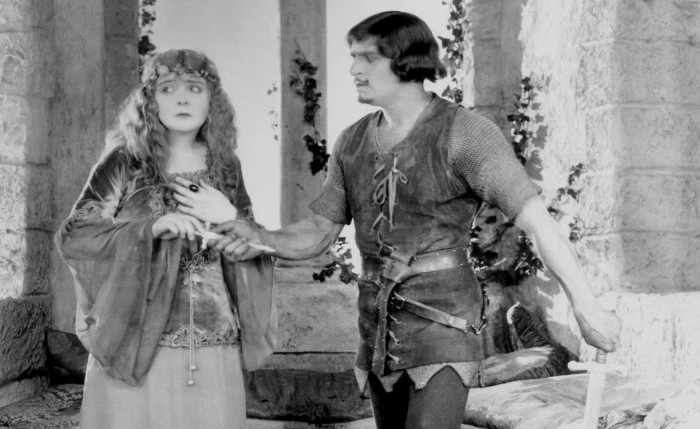
Blake is a figurehead for rebellion against the Earth Federation just as Robin Hood was for the people of Nottingham. In the 1922 silent film Robin Hood a caption reads: ‘These lusty rebels only waited a leader to weld them into a band – an outlaw band destined to be immortal in legend and story’. In this instance, it is ambiguous as to whether the caption means that Robin and his merry men will be immortal in legend among the people within the world of the narrative or in the many tellings of the story for the cinema viewer (as Robin Hood was a legend for the reader in the ballads ‘Robin Hood’s Birth’ and ‘Robin Hood and the Bishop of Hereford’). However, the film Robin and Marian (1976) is clearer where it is revealed that Robin Hood has become a legend and it is asked whether one has ever tried fighting a legend. In the first Blake’s 7 episode ‘The Way Back’ Blake learns at a meeting that he had previously been a rebel against the Federation but had been brainwashed inro becoming a model citizen and resides in a dome. Once the rebels at the meeting, bar Blake, are massacred by Federation guards Blake is put on trial as a paedophile in order to destroy his credibility as an activist and upon being found guilty is sentenced to the prison planet of Cygnus Alpha. More importantly, in the Blake’s 7 episode ‘Seek-Locate-Destroy’ two Federation officials discuss the Blake problem with Supreme Commander Servalan. They tell her that although information about Blake and his actions is suppressed, stories get out through word of mouth and the rumour is elaborated upon. Blake, they say, is becoming a legend, now with his ship, the Liberator, and his name is a rally call for malcontent of all persuasions. Servalan, though, stresses that Blake is just a man, backed by a handful of criminals.
Furthermore, just as Robin Hood struck a blow for freedom so too is that Blake’s aim. In the Adventures of Robin Hood film (1938) Robin says ‘I’ll organize a revolt, exact a death for death, and I’ll never rest until every Saxon in this shire can stand up free men, and strike a blow for Richard and England’. Similarly, in Blake’s 7 ‘Space Fall’ Jenna says to Blake ‘At least you’re still alive’ to which he responds ‘No! Not until free men can think and speak. Not until power is back with the honest men’. This leads to Avon cynically asking ‘Have you ever met an honest man?, at which point Jenna glances at Blake saying ‘Perhaps’. This scene prepares for Blake’s seizing the Liberator and waging war against the Federation.

Before Blake takes control of the spaceship Liberator and becomes more of a legend for striking blows for freedom, he is being transported to the prison planet Cygnus Alpha aboard the spaceship London. In ‘Space Fall’, the villainous Federation officer Raiker tells Blake, who, with Avon and Jenna, has seized the computer room, that one of the prisoners on board the ship will be killed every 30 seconds until the trio surrender themselves which they do. In the television series The Adventures of Robin Hood there are examples of prisoners being threatened with execution unless a character is surrendered but it is not always Robin Hood himself who must be delivered. Furthermore, it is the Sheriff of Nottingham and the Deputy Sheriff who threaten the executions to whom Raiker is not usually compared. In the episode ‘The Hero’ (26/11/56) eight men are to be hanged, one a day at sunset, until the man suspected of murdering the Sheriff of Nottingham’s brother is surrendered. In this instance, however, Robin Hood is able to send a message to the Sheriff that another man murdered his brother. In ‘Hue and Cry’ (25/9/60), the Deputy Sheriff threatens to hang nine men unless the man who attacked him and stole his chain of office is surrendered. More importantly, in the episode ‘Hostage for a Hangman’ (18/9/60) the Deputy Sheriff is to hang men until Robin Hood surrenders himself. In the earlier Adventures of William Tell episode ‘The Hostages’ (22/9/58) Gessler orders Tell’s arrest after he steals a cache of weapons and threatens to execute six innocent men if Tell does not surrender but here Tell forces Gressler to call off the search, to release the hostages and leave the village.
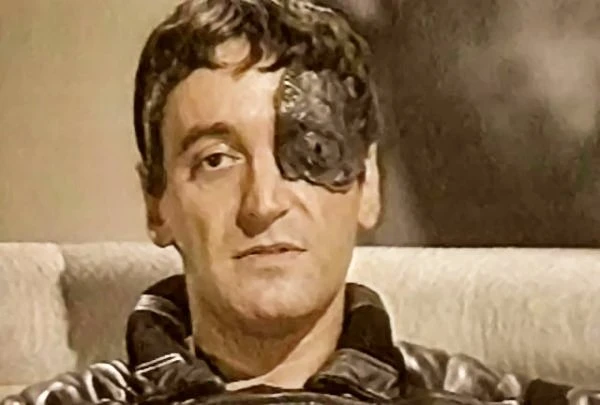
In Blake’s 7, Blake later becomes pitted against a villain named Travis who is disfigured and has a black eye-patch, with a character wearing an eye-patch having previously appeared in Terry Nation’s Doctor Who serial ‘The Android Invasion’ (1975). In that case, the character was fooled into believing that he must wear the eye-patch. In the ITV Adventures of Robin Hood episode ‘The Black Patch’ (10/12/56) a villain sets a trap to capture Robin, and the villain’s patch, rather than covering disfigurement, is an icon for his commitment to Prince John which he will be worn until the menace of Nottingham forest is captured. In this case, the villain is Sir Dunstan of Travers rather than the Sheriff of Nottingham, to whom Travis is most often likened (a la Stevens and Moore 2003: 66).
For in the Blake’s 7 episode ‘Seek-Locate-Destroy’ Blake tells Travis that if he killed him someone else would chase the Liberator crew and that Travis does not matter enough for Blake to kill. More importantly, in the episode ‘Duel’ Blake tells the character of Giroc, who along with Sinofar has arranged a duel between Blake and Travis, that as long as Travis is alive he will be the one chasing Blake and that Blake knows that he can beat him. In the ITV Adventures of Robin Hood it was established early on that Robin felt he could beat the Sheriff of Nottingham and in the much later episode ‘The Devil You Don’t Know’ (19/12/59) the Sheriff is ‘the devil they know’ and they are left with the Deputy Sheriff, ‘the devil they don’t know’. Similarly, before this, in The Adventures of William Tell episode ‘The Elixir’ (10/11/58) the villain Gressler inquires as to why Tell is not going to kill him to which Tell replies that he will not because he knows his enemy using the same language of knowing the devil.
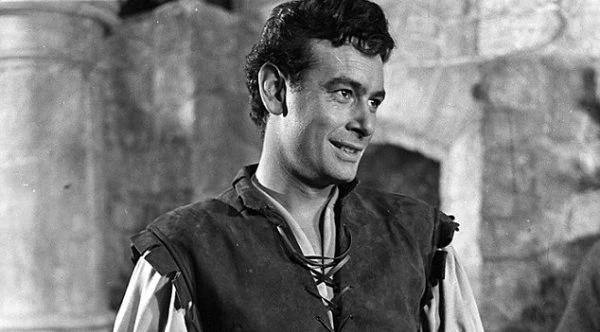
The ITV Adventures of Robin Hood episode ‘The Doctor' (5/5/58) and The Adventures of William Tell episode ‘The Surgeon’ (16/2/59) also prefigure the Blake’s 7 episode ‘Breakdown’. In the Robin Hood episode, Little John breaks his leg while escaping from the Sheriff and is taken to a specialist in broken limbs. While the specialist, Sir George Woodley attends to Little John here the servant, and not the Doctor, reports their visit to the Sheriff. In the William Tell episode, a surgeon is needed to save Tell who has been struck by an arrow. But the surgeon first lets the villain Gressler know that the rebels had faked the notion that plague had stricken the village so that Gressler can enter and capture Tell. Then with Tell moved elsewhere the surgeon works under duress and gets a message written in Latin to Gressler about Tell’s whereabouts. The rebels are able to escape. In ‘Breakdown’ Gan’s limiter malfunctions and he is in urgent need of neuro-surgery. The surgeon Professor Kayn instructs the space station to which the rebels have come to alert the Federation as to the presence of the rebels but Blake forces Kayn to perform the operation onboard the Liberator before a Federation plasma bolt misses the Liberator and destroys the station to which Kayn has been returned instead. Gan is like Little John and more like the figure of The Bear than the Robin Hood figure of Tell but the parallel between the Blake's 7 and William Tell episodes also exists.
Drawing conclusions from the above discussion, then, and it is apparent that although a multitude of ballads and plays were read and films and television programmes were viewed, Blake’s 7 bears the most similarities, but not all, with the ITV Robin Hood and William Tell series of the 1950s and 60s. We can also see that the format of Blake’s 7 bears connections with Robin Hood and that there are similarities in certain scenes but furthermore that the entire plot of an episode of Blake’s 7, ‘Breakdown’, follows the similar path as an episode of Robin Hood and of the Robin Hood like series William Tell.
----------------------------------------------------------------------
I’d like to thank Tim Harris, Richard Harris and Simon Heritage for their continued friendship and as always my Muse Dr Anjili Babbar for inspiration. This article has grown out of work for the book Terry Nation which I co-wrote with Professor Jonathan Bignell (Manchester University Press, 2004). I also appreciate Ian Potter’s pointing me in the direction of the Robin Hood ballads.
References
Liberation: The Unofficial and Unauthorised Guide to Blake’s 7 by Alan Stevens and Fiona Moore (Telos, 2003), The Man Who Invented the Daleks: The Strange Worlds of Terry Nation by Alwyn Turner (Aurum Press, 2011).
Published on May 30th, 2022. Written by Andrew O'Day for Television Heaven.


